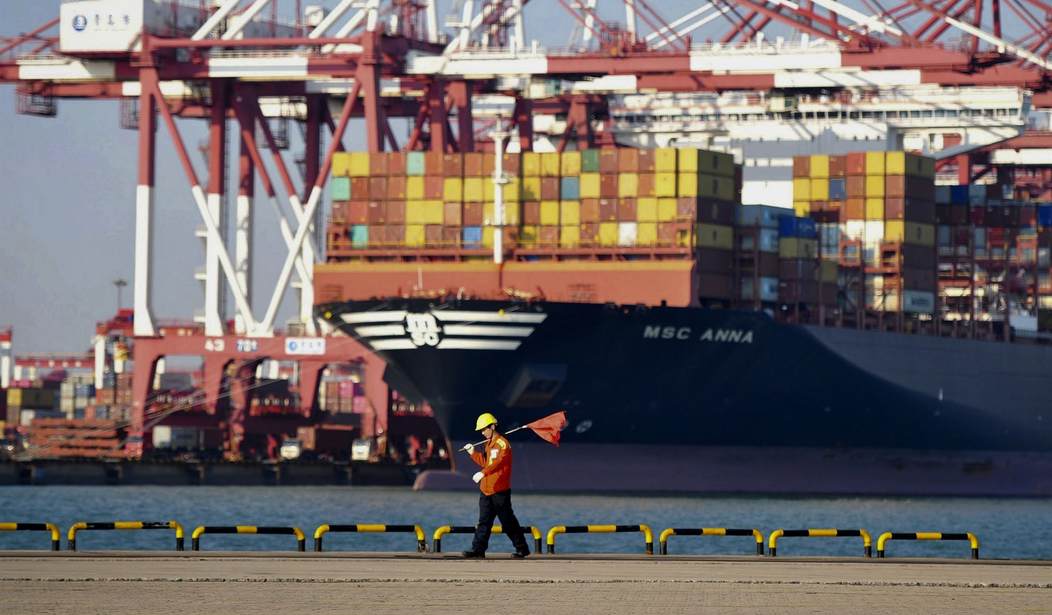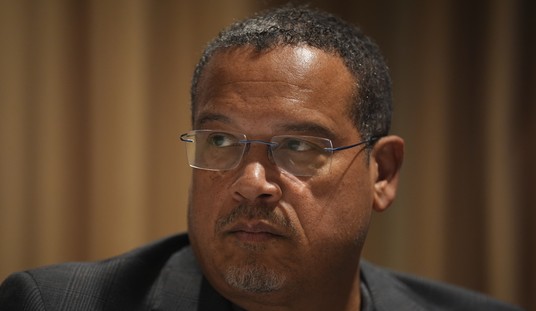The supply-chain crisis might have taken a back seat in media coverage to the Democratic credibility crisis in the Beltway, but that’s not due to any improvement. Shipping continues to back up outside West Coast ports at almost record levels despite the White House’s claim of heightened attention and interventions. And China’s actions in the pandemic are about to make it worse, the Washington Post also reports.
David Lynch noted yesterday that the Omicron wave here at home has contributed to a near-record of stalled container ships, contradicting the Biden administration’s assertions of improvement:
Worker shortages caused by the omicron coronavirus variant and haggling over a new dockworkers contract are likely to aggravate costly supply chain jams over the next several months, clouding prospects for quick relief from the highest inflation in four decades.
The White House says the worst supply snarls may be in the past, noting that key Southern California ports are shrinking their cargo backlogs and transpacific shipping costs have plunged by more than one-third from their mid-September peak.
But the cost of sending a standard metal container from China to the U.S. West Coast remains more than three times what it was one year ago and is expected to remain elevated through the first half of the year, fueling painful annual inflation readings, according to the Freightos index and industry executives.
Freight is taking longer than ever to cross the Pacific, with goods requiring an average of 113 days to travel from Chinese factory gates to American hands, according to data from Flexport, a freight forwarder. On Friday, the floating traffic jam of container ships waiting to enter the Ports of Los Angeles and Long Beach numbered a near-record 106 vessels, according to the Marine Exchange of Southern California, a nonprofit maritime group.
“If anything, it’s getting worse,” said Phil Levy, Flexport’s chief economist. “I don’t think there’s any reason to be sounding the all-clear at this stage.”
That alone signals that inflation won’t subside soon. Most of the inflation problem comes from the structural economic problems created by the Federal Reserve’s massive monetary expansion in response to the 2007-8 financial crisis. That won’t get solved until the Fed acts to contract the money supply, which will almost certainly create a significant recession. However, the supply chain crisis exacerbates the problem, and if we aren’t resolving these backlogs, we can expect that to continue inflationary pressure on the economy.
The impact of China’s actions will make it worse, too. Now that China has decided on massive lockdowns as a response to Omicron, we can expect the supply lag to worsen even if we start getting the ships unloaded more quickly, the New York Times reports:
Companies are bracing for another round of potentially debilitating supply chain disruptions as China, home to about a third of global manufacturing, imposes sweeping lockdowns in an attempt to keep the Omicron variant at bay.
The measures have already confined tens of millions of people to their homes in several Chinese cities and contributed to a suspension of connecting flights through Hong Kong from much of the world for the next month. At least 20 million people, or about 1.5 percent of China’s population, are in lockdown, mostly in the city of Xi’an in western China and in Henan Province in north-central China.
The country’s zero-tolerance policy has manufacturers — already on edge from spending the past two years dealing with crippling supply chain woes — worried about another round of shutdowns at Chinese factories and ports. Additional disruptions to the global supply chain would come at a particularly fraught moment for companies, which are struggling with rising prices for raw materials and shipping along with extended delivery times and worker shortages.
China used lockdowns, contact tracing and quarantines to halt the spread of the coronavirus nearly two years ago after its initial emergence in Wuhan. These tactics have been highly effective, but the extreme transmissibility of the Omicron variant poses the biggest test yet of China’s system.
What evidence do we have that China’s policies were “highly effective”? There is as much evidence for that as there is for the prospect that China’s COVID-19 vaccines were “highly effective” — China’s own claims. Zero-COVID policies have failed in places like Australia, where data is much more reliable, so there’s hardly any reason to suspect that they work in China. Furthermore, the rush to lock down in the face of this much-milder variant despite a supposedly widely vaccinated population strongly suggests that their claimed data on both the vaccines and case rates are highly suspect.
The one bright spot in this instance will be to educate American corporations on the fragility of their supply chains. Cheaper doesn’t necessarily mean better, or even profitable in the long run. Sourcing your products from a largely closed totalitarian system might work in normal conditions for a while, but you may be one virus away from suddenly finding your logistics collapsing.
Functionally, however, the US response hasn’t been much better. Thanks to CDC guidelines and a complete failure to plan for testing in a variant wave, US firms on this side of the Pacific find themselves in de facto shutdowns. People come into contact with Omicron or find themselves symptomatic without being able to confirm a diagnosis, and have to miss work, likely without any necessity as the virus rips through the population regardless. That is also choking the logistics in the US and producing end-consumer shortages in grocery stores and other retailers.
The Omicron wave in the US should settle out in the next few weeks, so we can perhaps expect some incremental improvements in the domestic supply chain at that point. Don’t expect that to be a solution to inflation, but it might take some of the edge off the amplitude. As for the global supply chain crisis, including at the ports, there is little evidence that the White House has done anything effective to resolve it, nor has any real plans on tap in that direction.








Join the conversation as a VIP Member